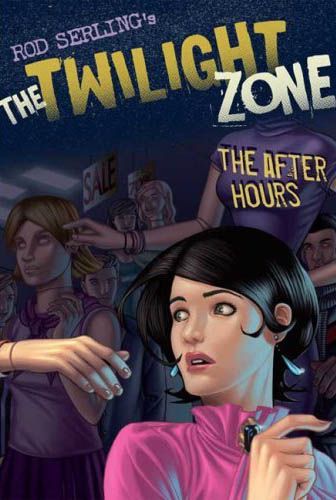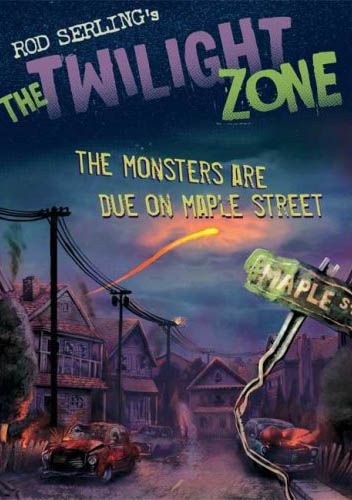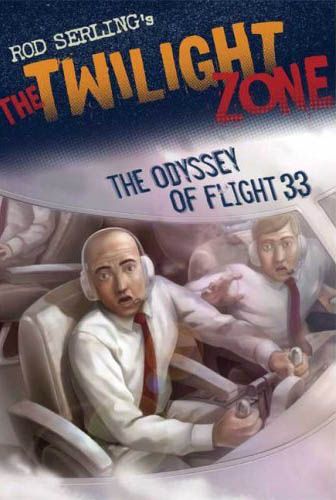Rod Serling's The Twilight Zone: The Odyssey of Flight 93
adapted by Mark Kneece and Robert Grabe
Walker Books for Young Readers, $16.99
Rod Serling's The Twilight Zone: The Monsters Are Due on Maple Street
adapted by Mark Kneece and Rich Ellis
Walker Books for Young Readers, $16.99
Rod Serling's The Twilight Zone: Walking Distance
adapted by Mark Kneece and Dove McHargue
Walker Books for Young Readers, $16.99
Rod Serling's The Twilight Zone: The After Hours
adapted by Mark Kneece and Rebecca Isaacs
Walker Books for Young Readers, $16.99
Folks (I don't remember who exactly, but I know it was more than one) like to claim that one of the virtues of comics is its ability to allow the reader to suspend their disbelief. People gifted with impossible powers, alien invasions, wanton destruction, impeccably beautiful and buff heroes wearing tight-fighting, brightly colored costumes, we can accept all of it and more thanks to the magic of sequential art.
That may be true, but there are some instances where TV, movies and even theater can surpass comics in that regard. An actor's performance, the way he or she brings emotion or emphasis onto a particular turn of phrase can go a long way towards making bad dialogue seem if not brilliant then at least passable. And often with film or TV, watching an actor move about a fully realized set and interact with the objects in it (I realize I'm not doing a good job explaining myself here) can help sell a plausibility that comic simply can't sometimes.
Take, for example, the Twilight Zone. Now, many of the episodes from Rod Serling's classic sci-fi show are, quite simply, hogwash -- completely far-fetched and often overblown morality tales with supposedly twist endings that can easily strain the credulity of anyone with a high school education.
And yet, as anyone who's watched the show will tell you, it's very easy once you're in the midst of an episode to buy what Serling is selling hook, line and sinker. I remember once watching an episode about a evil slot machine that drove a man to his death. Afterwards I chided myself for being so scared, but while watching I completely accepted -- nay, was convinced -- that a one-armed bandit could come into my home and kill me.
That was a large part of Serling's genius: he could make the ridiculous seem completely believable. That's not the case at all with this new series of adaptations from Walker Books, spearheaded by Mark Kneece. Sadly, these graphic novel translations of classic Twilight tales lay flat and lifeless on the page, merely highlighting all the awkward phrases, leaps in logic and other flaws in the source material.
Of course, part of the problem here is that the artists, all recent graduates of the Savannah College of Art and Design, are just not up to the challenge of adapting this material. All the stories here, regardless of the artist involved, have a grey generic look to them. The people wear bland, everyman expressions and the backgrounds are dull and devoid of detail. There's no sense that any of these stories are taking place in a specific world or town; more like an empty warehouse.
As a result, anyone who's ever seen the show and is familiar, even in a cursory way, with the source material will find these adaptations to be plodding and overly reverential, and suffer horribly in comparison. You could argue that these books are designed for kids, but I like to think that even kids can sense that they're getting a half-hearted presentation here.
If you're going to adapt a classic series or book or movie or whatever into comics, it's not enough just to retell the story. You need to bring something fresh to the table to make the reader sit up and take notice. Otherwise don't bother. I can watch the original for free on YouTube.





